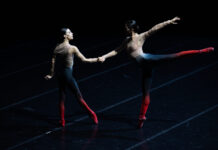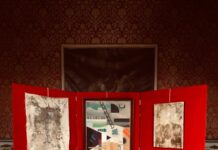An example of pervasive dance from morning to night is give by the show on January 1st, 2021: the ballet, as usual, entered the New Year’s Concert from Vienna at lunchtime, with Davide Dato, the company’s Italian star alongside numerous partners among whom Alice Firenze and Sveva Gargiulo. In the afternoon the Teatro Stabile of Veneto, uniting Treviso, Venice and Padua in the concert, offered the dances of Luciano Padovani for his group Naturalis Labor, between Piazzolla tangos and pieces of Traviata in Pina Bausch style. In the meantime, from the Berlin Staatsoper in streaming we witnessed small contemporary pieces and Christmas pas de deux, such as the Black Swan with the Cuban Yolanda Correa and the Moldovan Dino Tamarazlacaru and the Nutcracker grandpas with the Japanese Aya Okumura and the Cuban Alejandro Virelles. In the evening it was the turn of Roberto Bolle, who this time by choice and to “make a virtue out of necessity” has chosen among Italian dancers.
Here there are the dancers of La Scala Theatre, the Rome Opera, of MM, the company of Michele Merola from Reggio Emilia, tangueros and swingers from Milan; choreographies by Mauro Bigonzetti (Violenza and the foursome for Vasco at Palazzo Reale) and Amedeo Amodio (Carmen), next to Cacti by Alexander Ekman, a great performance of choral dance for Bolle.
VRD is already pressing, with the people watching the dance as if they were immersed in the scene by wearing virtual reality viewers. Even dance lessons and skill competitions can be conveyed in forms that require new skills and new digital creativity.
By making your avatar dance, you challenge the space-time limits, you fearlessly head towards new unexplored frontiers. And to think that even in the eighties of the last century videodance was considered a betrayal of the art of the body, which through live performance could delight people with effort and sweat, physical contact, and vision-emotion in real time.







